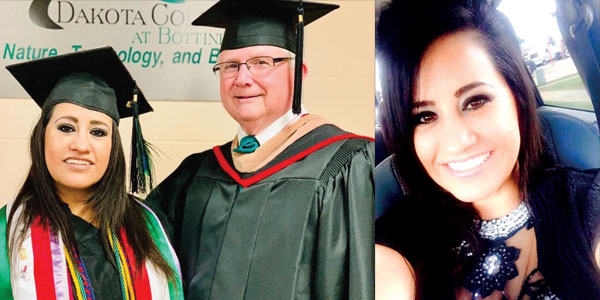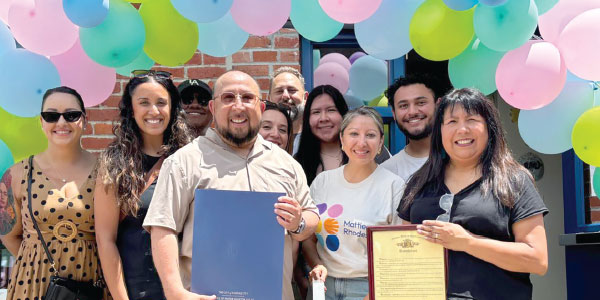
By Roberta Pardo
For Marina Carrillo, domestic violence is more than statistics.
For nine years, it was her life.
Born in Chihuahua, Mexico, Carrillo moved to the United States when she was in her early 20s, where she met her now ex-husband. That was when her torment started.
Carrillo lived in Kansas City for 10 years, and experienced domestic violence in most of them.
At first, recognizing and accepting the abuse Carrillo was suffering was hard.
“Accepting this type of relationship is hard because you can’t find an explanation about why this is happening to you,” she said.
Carrillo understands how hard it is to escape a situation like hers.
“When my kids were old enough to see things they shouldn’t, I decided that, no matter what, the violence needed to stop,” she said.
But Kansas City did not have enough resources to help Carrillo start a new life. The police came to her door multiple times, but once they left, the situation reverted to what it had been before their arrival.
Carrillo and her family moved to North Dakota, where she contacted the Domestic Violence Crisis Center. The center helped her create an “escape” plan. And next time her husband hit her she left him. Unfortunately, there was a flood and her kids and her had to live in shelters and hotels, trying to start a new life. She still bears physical and psychological scars from the abuse, even though it has been almost 10 years since she finally left her abuser.
In North Dakota, Carrillo has taken classes on domestic violence. That is why she believes one way to change the culture around domestic violence is to discuss it more in schools, as is the case with bullying.
“In many domestic violence cases, the most affected are the children, so why do we only talk about bullying?” she asked.
Still residing in North Dakota with her three children, a dog and six birds, Carrillo was able to attend college and get her associate’s degree, she said. She continues to attend many workshops and seminars on domestic violence.
Carrillo said anyone can be a victim of domestic violence.
“We tend to say that those in this situation are ignorant, fragile, weak or with low self-esteem,” she said. “But my message is different: Domestic violence does not exclude anyone; it can happen in all socioeconomic levels, and to anyone, regardless of nationality, age and education level.”
Carrillo’s advice to other people suffering from domestic violence is to reach out to people or organizations in the community that can help them. There are many programs willing to lend a hand, she said.
There are multiple resources throughout the Kansas City area to help domestic violence victims, including organizations like the Hope House. For more information, call the Hope House hotline at (816)-461-HOPE (4673).
________________________________________________________________________________________
Sobreviviente de violencia doméstica comparte sus dificultades
Para Marina Carrillo, la violencia doméstica es más que estadísticas.
Por nueve años, fue su vida.
Nacida en Chihuahua, México, Carrillo se mudó a Estados Unidos cuando tenía poco más de 20 años, cuando conoció a su ahora ex esposo. Allí comenzó su tormento.
Carrillo vivió en Kansas City por 10 años, y experimentó violencia doméstica durante la mayoría de ellos.
Al principio, fue difícil reconocer y aceptar el abuso que sufría Carrillo.
“Aceptar este tipo de relación es difícil porque no puedes encontrar una explicación sobre por qué te está sucediendo esto”, dijo.
Carrillo comprende lo difícil que es escapar de una situación como la de ella.
“Cuando mis hijos tenían la edad suficiente para ver cosas que no debían, decidí que, sin importar qué, la violencia debía detenerse”, dijo.
Pero Kansas City no tenía suficientes recursos para ayudar a Carrillo a comenzar una nueva vida. La policía llegó a su puerta varias veces, pero una vez que se fueron, la situación volvió a ser lo que había sido antes de su llegada.
Carrillo y su familia se mudaron a Dakota del Norte, donde contactó al Centro de Crisis de Violencia Doméstica. El Centro la ayudó a crear un plan de “escape”. Y la próxima vez que su esposo la golpeó, ella lo dejó. Desafortunadamente, hubo una inundación y sus hijos y ella tuvieron que vivir en refugios y hoteles, tratando de comenzar una nueva vida. Todavía tiene cicatrices físicas y psicológicas del abuso, a pesar de que han pasado casi 10 años desde que finalmente dejó a su abusador.
En Dakota del Norte, Carrillo ha tomado clases sobre violencia doméstica. Por eso cree que una forma de cambiar la cultura en torno a la violencia doméstica es debatirla más en las escuelas, como es el caso del acoso escolar.
“En muchos casos de violencia doméstica, los más afectados son los niños, entonces, ¿por qué sólo hablamos de intimidación?”, preguntó.
Aún viviendo en Dakota del Norte con sus tres hijos, un perro y seis pájaros, Carrillo pudo asistir a la universidad y obtener su título de asociado, dijo. Ella continúa asistiendo a muchos talleres y seminarios sobre violencia doméstica.
Carrillo dijo que cualquiera puede ser víctima de violencia doméstica.
“Tendemos a decir que aquellos en esta situación son ignorantes, frágiles, débiles o con baja autoestima”, dijo. “Pero mi mensaje es diferente: la violencia doméstica no excluye a nadie; puede suceder en todos los niveles socioeconómicos y para cualquier persona, independientemente de su nacionalidad, edad y nivel educativo”.
El consejo de Carrillo a otras personas que sufren violencia doméstica es comunicarse con personas u organizaciones de la comunidad que puedan ayudarlos. Hay muchos programas dispuestos a echar una mano, dijo.
Existen múltiples recursos en toda el área de Kansas City para ayudar a las víctimas de violencia doméstica, incluidas organizaciones como Hope House. Para obtener más información, llame a la línea directa de Hope House al (816)-461-HOPE (4673).










